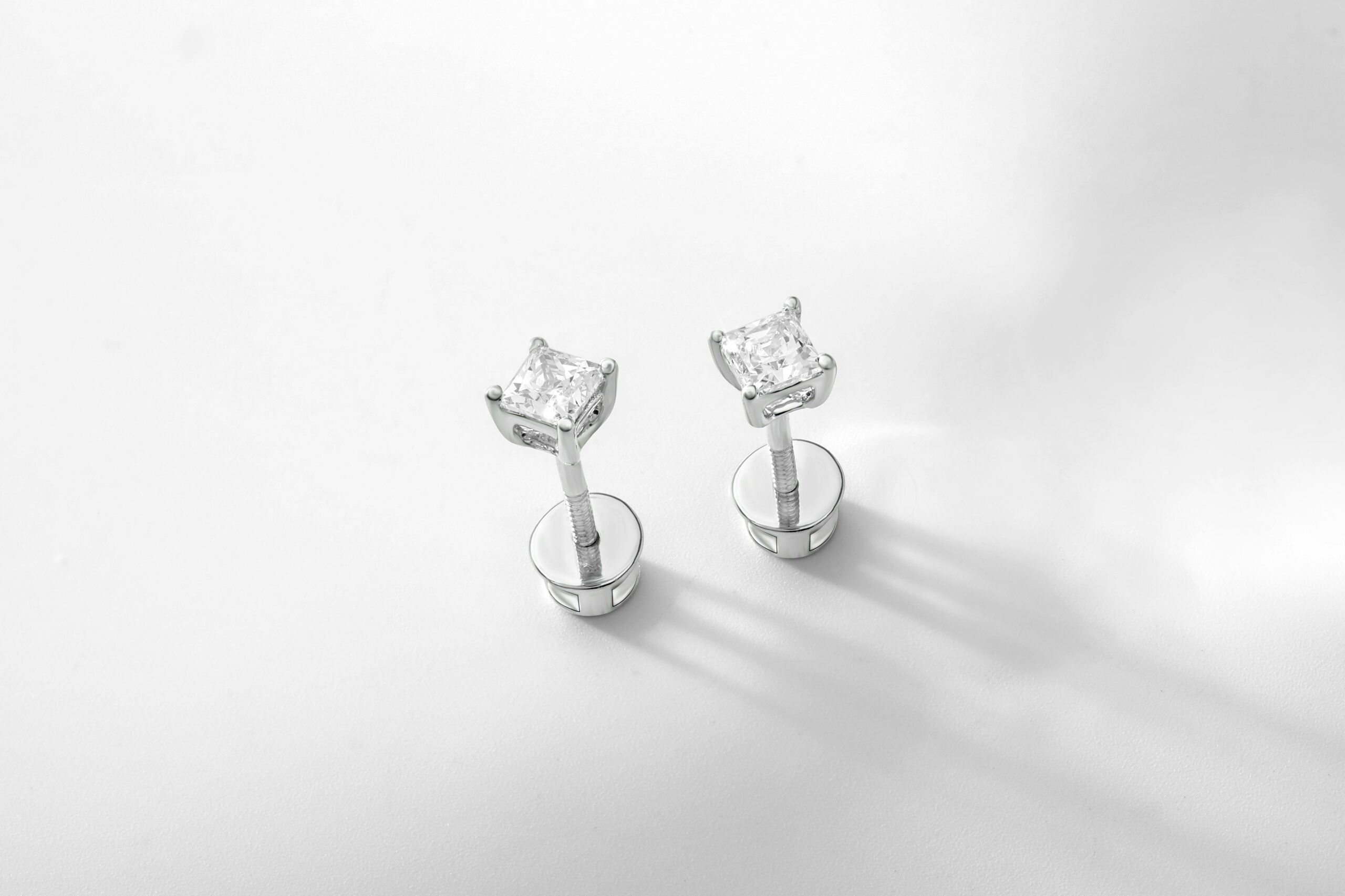When it comes to investing in precious metals, many wonder: Which shines brightest—Gold, Silver, Platinum, or Palladium? This question isn’t just about sparkle or shine; it’s about value, rarity, and potential growth in today’s volatile market. If you’ve ever asked yourself, “What is the best precious metal investment in 2024?” or “How do Gold, Silver, Platinum & Palladium compare?“, you’re in the right place. In this article, we’ll dive deep into the world of precious metals, exploring their unique qualities, market trends, and why some investors swear by one metal over the others.
Precious metals investing has surged in popularity amid economic uncertainties, inflation fears, and shifting global markets. Gold has long been revered as the ultimate safe-haven asset, but is it still the top choice today? Or should savvy investors look closer at silver’s industrial uses, or the rising demand for platinum and palladium in green technologies? These questions are crucial for anyone seeking to diversify their portfolio with high-performing precious metals. We’ll unpack the strengths and weaknesses of each metal, from gold’s timeless allure to palladium’s rapid price spikes, giving you a clear, comprehensive comparison.
Stay tuned as we compare market performance, rarity, and future outlooks for these four metals. Whether you’re a seasoned investor or a curious beginner, understanding the nuances of Gold vs Silver vs Platinum vs Palladium can help you make smarter investment choices. Ready to discover which precious metal truly shines the brightest in 2024? Let’s get started!
Why Gold Remains the Most Valuable Precious Metal: Key Factors Explained
Gold has been captivating human societies for thousands years, and it still holds a special place as the most valuable precious metal. But why exactly gold remains so precious, especially when other metals like silver, platinum, and palladium exist? The answer is complex, involving history, physical properties, economic factors, and cultural significance. Today, we will explore key factors explaining why gold shines brightest among precious metals, compare it with silver, platinum, and palladium, and help you understand which really holds the most value in today’s market.
Why Gold Remains the Most Valuable Precious Metal: Key Factors Explained
Gold’s value does not only come from its shiny yellow appearance but also from many unique qualities that sets it apart:
- Scarcity: Gold is rare, but not the rarest metal on Earth. However, its availability is limited enough to keep prices high, especially compared to silver, which is more abundant.
- Durability: Gold does not tarnish or corrode over time, unlike silver which oxidizes and turns black. This permanence makes gold ideal for jewelry, coins, and investment.
- Malleability: It is very soft and can be shaped easily without breaking. This characteristic was highly prized by ancient civilizations who crafted intricate ornaments and coins.
- Historical Significance: For thousands of years, gold been used as money and symbol of wealth. It was the basis of many monetary systems like the gold standard, giving it a deep-rooted trust.
- Economic Hedge: Investors flock to gold during times of economic uncertainty or inflation because it retains value when paper currencies lose theirs.
- Cultural Importance: Around the world, gold symbolizes power, purity, and prestige. Weddings, religious ceremonies, and official awards often feature gold prominently.
Precious Metals: Which Shines Brightest? Gold, Silver, Platinum, Palladium Compared
While gold is often considered king, other precious metals also have their own unique appeal and worth. Here’s a quick overview of each metal’s standout traits:
Gold:
- Color: Bright yellow
- Density: 19.32 g/cm³
- Uses: Jewelry, investment (bullion, coins), electronics, dentistry
- Price Stability: High
- Market Price (approximate): $1,900 per ounce (2024)
Silver:
- Color: Bright white, shiny
- Density: 10.49 g/cm³
- Uses: Jewelry, industrial applications (electronics, solar panels), photography
- Price Stability: More volatile than gold
- Market Price (approximate): $25 per ounce (2024)
Platinum:
- Color: Silvery-white
- Density: 21.45 g/cm³
- Uses: Automotive catalytic converters, jewelry, medical instruments
- Price Stability: Traditionally higher priced than gold but more volatile recently
- Market Price (approximate): $1,000 per ounce (2024)
Palladium:
- Color: Silvery-white
- Density: 12.02 g/cm³
- Uses: Catalytic converters, electronics, dentistry
- Price Stability: High volatility, influenced by industrial demand
- Market Price (approximate): $2,300 per ounce (2024)
Comparing Gold, Silver, Platinum & Palladium: Strengths and Weaknesses
Let’s put these metals side by side, considering different factors that investors and collectors care about:
| Factor | Gold | Silver | Platinum | Palladium |
|---|---|---|---|---|
| Scarcity | High | Moderate | High | High |
| Industrial Use | Limited | Extensive | Extensive | Extensive |
| Price Volatility | Low | High | Moderate-High | Very High |
| Historical Use as Money | Yes | Limited | No | No |
| Corrosion Resistance | Excellent | Poor | Excellent | Good |
| Investment Demand | Very High | High | Moderate | Growing |
From this table, it’s clear gold’s combination of scarcity, stability, and cultural value keeps it at the top. Silver is cheaper and more industrially useful but suffers from price swings. Platinum and palladium are essential for modern technology but lack gold’s historical and cultural weight.
Practical Examples of Gold’s Enduring Value
- During Financial Crises: In 2008 financial crash, gold prices surged as investors sought safety. Unlike stocks and bonds, gold kept its value and even increased.
- Cultural Traditions: In India, gold jewelry is a must-have for weddings and festivals, making it a form of wealth storage and social status.
- Central Bank Reserves: Countries hold gold as part of their foreign exchange reserves, showing ongoing trust in its value.
Why Not Just Invest in Other Metals?
Some might ask, why not choose cheaper
Silver vs. Platinum: Which Precious Metal Offers Better Investment Potential in 2024?
Silver vs. Platinum: Which Precious Metal Offers Better Investment Potential in 2024? Precious Metals: Which Shines Brightest Gold, Silver, Platinum, Palladium? Precious Metals: Comparing Gold, Silver, Platinum & Palladium
When it comes to investing in precious metals, many investors often asks which metal is the best choice. Gold usually takes the spotlight but silver, platinum, and palladium also have their own unique appeal. In 2024, with economic uncertainties and market volatilities, these metals have been drawing attention for different reasons. This article will focus on silver and platinum, compare them with gold and palladium, and try to find which one offers better investment potential in this year.
The Basics of Precious Metals: Gold, Silver, Platinum, and Palladium
Before diving deep into silver and platinum, it helps to understand the main characteristics of these four precious metals.
- Gold: The most traditional and widely recognized safe haven asset. It’s used in jewelry, central bank reserves, and increasingly in technology.
- Silver: Known as “poor man’s gold,” silver is more affordable and has both industrial and investment demand.
- Platinum: Rarer than gold and silver, platinum is heavily used in automotive catalytic converters, jewelry, and some industrial applications.
- Palladium: Often paired with platinum, palladium is mostly used in catalytic converters and electronics.
Each metal behaves differently in market conditions because of supply, demand, and usage patterns.
Silver vs. Platinum: What Makes Them Different?
Silver and platinum have unique properties that affect their prices and investment appeal:
- Supply and Scarcity: Platinum is much rarer than silver. Platinum’s annual production is significantly lower, making it scarcer. Silver, however, is more abundant but still limited.
- Industrial Demand: Silver’s demand strongly tied to electronics, solar panels, and medical uses. Platinum’s demand depends heavily on automotive industry, especially for emission control.
- Price Volatility: Silver tends to be more volatile. Because it has smaller market capitalization and is used both as an industrial metal and store of value, its price swings can be sharper.
- Historical Price Trends: Historically, platinum has traded at a premium to gold, but since 2018 its price often drop below gold due to changing demand in automotive sectors.
Comparing Investment Potential in 2024
To understand which metal might offer better returns or safety, we look at several factors:
Market Trends and Economic Outlook
- Silver prices tend to rise during economic uncertainty because investors seek safe haven but also benefit from industrial growth.
- Platinum’s price depends on automotive industry recovery and green energy transition. The push for hydrogen fuel cells could increase platinum demand.
Price Forecasts and Volatility
- Analysts expect silver to remain volatile but potentially rally if inflation stays elevated.
- Platinum’s price may recover as stricter emission regulations increase demand for catalytic converters.
Supply Constraints
- Platinum mining faces challenges as major producers in South Africa experience labor unrest and production issues.
- Silver supply is more stable but could be impacted by mining slowdowns and increased recycling.
Practical Comparison Table: Silver vs. Platinum in 2024
| Aspect | Silver | Platinum |
|---|---|---|
| Current Price (approx.) | $25 per ounce | $1,000 per ounce |
| Supply | More abundant, stable | Scarce, supply disrupted |
| Industrial Demand | Electronics, solar, medical | Automotive, fuel cells |
| Volatility | High | Moderate |
| Investment Appeal | Affordable, dual role | Rarer, tied to green tech |
| Price Trend | Potential rally if inflation persists | Possible recovery with auto sector |
| Historical Premium | Trades below gold | Usually above gold, recent weakness |
How Do Gold and Palladium Fit Into The Picture?
Gold remains the benchmark for precious metals investing. It rarely loses value in crisis and central banks hold massive reserves. But gold has limited industrial use, which means its price depends mostly on monetary policies and investor sentiment.
Palladium, although less known, is very important in automobile catalytic converters. Its price soared in recent years due to supply crunch but it is more exposed to automotive industry risks than gold or silver.
Why Investors Consider Diversifying Among These Metals?
Investing in one metal only might miss opportunities or risks. Here some reasons diversification helps:
- Balancing Volatility: Silver’s price can jump wildly while gold or platinum might be steadier.
- Industry Exposure: Platinum and palladium provide exposure to automotive and green tech sectors.
- Safe Haven vs. Industrial Use: Gold is mostly a safe haven, silver mixes both, and platinum, palladium are more
Top 5 Surprising Uses of Palladium Beyond Jewelry and Its Market Impact
When people think about precious metals, usually gold and silver comes first to mind, with their long history of wealth and beauty. But palladium, a lesser-known metal, has been quietly carving a niche beyond its shiny use in jewelry. It surprises many that palladium plays several important roles in industries far beyond just decoration. In this article, we explore the top 5 surprising uses of palladium beyond jewelry, and how these uses impact its market. Also, we compare the precious metals gold, silver, platinum, and palladium to see which one really shines brightest in different contexts.
Top 5 Surprising Uses of Palladium Beyond Jewelry
Most people associate palladium with rings or watches, but this metal is much more versatile. Here are five unexpected uses of palladium.
- Catalytic Converters in Cars
- Palladium is a key ingredient in catalytic converters, devices installed in cars that reduce harmful emissions.
- It helps convert toxic gases like carbon monoxide and nitrogen oxides into less harmful substances such as carbon dioxide and nitrogen.
- This use has surged due to stricter environmental regulations worldwide.
- The automotive sector consumes about 80% of the global palladium supply, making it hugely important for the metal’s demand.
- Electronics and Microchips
- Palladium’s excellent conductivity and resistance to corrosion make it valuable in electronic components.
- It is used in multilayer ceramic capacitors (MLCCs), which are essential for smartphones, computers, and other devices.
- The metal ensures performance stability and longevity in tiny electronic parts.
- Dental Materials
- Palladium has been used in dental alloys for crowns and bridges.
- Its biocompatibility and resistance to tarnishing make it suitable for long-term dental restorations.
- Though gold was historically preferred, palladium offers a more affordable alternative without compromising quality.
- Hydrogen Storage and Purification
- Palladium can absorb large amounts of hydrogen gas, which makes it useful for hydrogen purification and storage systems.
- This property is particularly interesting for clean energy technologies, as hydrogen is looked at as a future fuel source.
- Scientists are exploring palladium-based membranes that selectively allow hydrogen to pass, improving efficiency.
- Chemical Industry Catalysts
- Beyond automotive catalysts, palladium is widely used in chemical reactions.
- It serves as a catalyst in processes like hydrogenation, carbon-carbon coupling, and other organic syntheses.
- Pharmaceutical companies rely on palladium catalysts to manufacture drugs and active ingredients.
Precious Metals: Which Shines Brightest Gold, Silver, Platinum, Palladium?
When it comes to precious metals, each one has unique qualities and uses. Here’s a quick comparison of gold, silver, platinum, and palladium across several important factors:
| Metal | Rarity | Industrial Use | Investment Demand | Price Volatility | Durability |
|---|---|---|---|---|---|
| Gold | Very rare | Low (mostly electronics) | Very high | Medium | High |
| Silver | More abundant | High (electronics, solar) | Medium | High | Medium |
| Platinum | Rare | High (auto catalysts) | Medium | High | Very High |
| Palladium | Rare | Very high (auto catalysts) | Growing rapidly | Very high | High |
- Gold is the traditional store of value, admired for its stability and beauty. Investors often flock gold during economic uncertainty.
- Silver is more abundant, making it cheaper, but its industrial demand in electronics and solar panels keeps prices lively.
- Platinum is rarer than gold and has strong automotive and industrial uses, but its price can be very volatile.
- Palladium has become a star due to the automotive industry’s reliance on it for catalytic converters, leading to rapid price increases.
Precious Metals: Comparing Gold, Silver, Platinum & Palladium
The four metals have their own strengths and weaknesses, which make them suitable for different purposes. Let’s look at some practical comparisons:
- Investment: Gold is preferred for long-term security and wealth preservation. Silver attracts investors looking for lower-cost exposure with industrial upside.
- Industrial Application: Palladium and platinum dominate in automotive catalysts. Silver is crucial in electronics and solar energy, while gold has more limited industrial use.
- Price Trends: Palladium has seen some of the sharpest price increases in the last decade, often outpacing platinum. Silver is more volatile due to its dual role as an industrial metal and investment asset.
- Physical Properties: Platinum and palladium are both platinum-group metals, known for their hardness and melting points. Gold and silver are softer but more malleable and easier to work with in jewelry.
Market Impact of Palladium
Comparing Durability and Shine: How Gold, Silver, Platinum, and Palladium Stack Up
When it comes to precious metals, people often debates which one shines the brightest or lasts the longest. Gold, silver, platinum, and palladium have been treasured through centuries, not just for their beauty but also their value and durability. But how do these metals really compare when it comes to shine and staying power? Here’s a deep dive into these four precious metals, highlighting their unique characteristics, historical significance, and practical uses in the world of finance and jewelry.
The Shimmer of Precious Metals: What Makes Them Shine?
All four metals — gold, silver, platinum, and palladium — have distinct luster that attract investors, collectors, and jewelers alike. Shine or brightness is a result of how a metal reflects light, which relates to its atomic structure and surface finish. For example:
- Gold has a warm, yellow glow. Its rich and unmistakable color is due to the way it absorbs blue light and reflects yellow and red wavelengths.
- Silver is the brightest metal commonly used in jewelry, with a brilliant white shine but it also tarnishes faster than others.
- Platinum offers a more subtle, silvery-white shine but is often preferred for its rarity and weight.
- Palladium is somewhat similar to platinum but generally lighter and sometimes has a slightly grayer tone.
The shine may fade over time if metals get scratched or exposed to harsh elements, but their fundamental brilliance remains a key selling point.
Durability: Which Metal Lasts the Longest?
Durability matters for many reasons — whether you want your investment to hold value or your jewelry to withstand daily wear. Here’s how these metals stack up:
- Gold: Pure gold (24 karat) is very soft and easily scratched. To improve durability, gold is often alloyed with other metals like copper or silver. 14k or 18k gold is more durable than pure gold but less shiny.
- Silver: Silver is also soft and prone to scratches and tarnish. Sterling silver, an alloy with 92.5% silver, is more durable than pure silver but still needs regular polishing.
- Platinum: Known for its toughness, platinum is much harder than gold and silver. It resists scratches and dents better, making it ideal for engagement rings and heirloom pieces.
- Palladium: Palladium is part of the platinum group metals and shares many of its durability traits. It’s lighter than platinum but still very strong and resistant to corrosion.
Here’s a simple table to visualize the relative hardness and durability:
| Metal | Relative Hardness (Mohs scale) | Tarnish Resistance | Weight (Density g/cm³) |
|---|---|---|---|
| Gold | 2.5 – 3 | Low | 19.3 |
| Silver | 2.5 | Low | 10.5 |
| Platinum | 4 – 4.5 | High | 21.4 |
| Palladium | 4 – 4.5 | High | 12.0 |
Historical Context and Popularity
Gold has been prized since ancient times — Egyptians used it for pharaohs’ tombs, and it became the standard for monetary systems worldwide. Silver has been used for coins and utensils, prized for its affordability and shine. Platinum and palladium are more modern discoveries—platinum became popular in the 18th century, and palladium was identified in the early 19th century.
In recent decades, platinum and palladium gained importance not only in jewelry but also in industrial applications, especially catalytic converters for cars. This industrial use impacts their market price and availability.
Practical Uses and Investment Considerations
When thinking about which metal to buy or trade, it’s important to consider their practical uses beyond just looks.
- Gold is the most widely recognized store of value. Central banks hold gold reserves, and investors buy gold bars, coins, and ETFs to hedge against inflation.
- Silver is more affordable and used in electronics, solar panels, and medical devices. Its price tends to be more volatile compared to gold.
- Platinum is rarer than gold and is heavily used in automotive and jewelry sectors. Its price can fluctuate based on industrial demand.
- Palladium has surged in value due to stricter emissions standards increasing demand for catalytic converters. It’s less known to casual investors but important in the industrial market.
Comparing Shine and Durability: Summary in Bullet Points
- Gold shines with a warm yellow glow but is softer and needs alloying for durability.
- Silver is the brightest metal but tarnishes easily and scratches with use.
- Platinum offers a subtle white shine and is highly durable and heavy.
- Palladium is similar to platinum, lighter and highly resilient with a grayish-white shine.
Real World Examples
- Engagement rings made of platinum last longer and stay shiny
Precious Metals Price Trends 2024: What Drives Gold, Silver, Platinum, and Palladium Market Fluctuations?
Precious metals price trends 2024 has been catching a lot of attention from investors, traders, and analysts alike. Gold, silver, platinum, and palladium continues to show interesting movements on the market, influenced by many factors that sometimes confuse even experienced market watchers. If you wonder what drives these metals’ prices and which one shines brightest in this competitive mix, this article explores those questions with facts, comparisons, and historical context.
What Drives Gold, Silver, Platinum, and Palladium Market Fluctuations?
One of the biggest reasons precious metals prices change is supply and demand, but it’s not the only thing. These metals are affected by various economic, geopolitical, and industrial factors, sometimes all at once, making their price patterns complex.
- Economic Indicators: Inflation rates, interest rates, and currency values, especially the US dollar, heavily influence precious metals. When inflation rises, gold and silver usually get more expensive because they are seen as a hedge against inflation.
- Industrial Demand: Unlike gold, which mostly used for jewelry and investment, metals like platinum and palladium are largely consumed by industries. For example, palladium is critical in automotive catalytic converters, so car manufacturing trends impact its price greatly.
- Geopolitical Tensions: Wars, trade disputes, and political instability often push investors towards safe-haven assets like gold, causing a spike in prices.
- Mining Output: If mining companies discover new deposits or face disruptions due to strikes, weather, or regulations, the supply side changes, influencing prices.
Historically, gold has been considered the most stable and reliable precious metal, often rallying during times of uncertainty. Silver, while also a safe haven, tends to be more volatile because it has bigger industrial uses. Platinum and palladium prices sometimes move opposite each other due to substitution in industrial applications.
Precious Metals: Which Shines Brightest — Gold, Silver, Platinum, or Palladium?
Deciding which metal shines brightest in 2024 depends on your perspective: investment safety, industrial use, or price performance. Here’s a quick breakdown:
- Gold: Traditionally viewed as the ultimate store of value. It’s less volatile than silver and rarely affected by short-term industrial demand swings. Central banks still hold gold reserves, supporting its price stability.
- Silver: Often called “poor man’s gold,” silver has dual roles as investment and industrial metal. Its price can soar during technology booms, but also crash when industrial demand falters.
- Platinum: More rare than gold, platinum’s price is closely tied to automotive and jewelry industries. It sometimes trades below gold due to market sentiment but can jump sharply if supply gets constrained.
- Palladium: This metal surged in recent years because of its crucial role in gasoline vehicle catalytic converters. However, with the rise of electric vehicles, future demand may be uncertain, adding risk to palladium’s price.
Comparing Gold, Silver, Platinum & Palladium: A Quick Facts Table
| Metal | Rarity | Primary Uses | Price Volatility | Historical Average Price (per oz) | Industrial Dependency |
|---|---|---|---|---|---|
| Gold | High | Investment, Jewelry | Low | $1,800 | Low |
| Silver | Medium | Industrial, Jewelry, Investment | High | $25 | Medium |
| Platinum | Very High | Automotive, Jewelry | Medium-High | $1,000 | High |
| Palladium | High | Automotive Catalytic Converters | High | $2,000 | Very High |
This table shows how different metals play unique roles in markets and industries. Investors often diversify across these metals to balance risk and reward.
Historical Context and Price Trends to Watch in 2024
Looking back over the last decade, gold prices have generally moved upward with spikes during major crises like the 2020 pandemic. Silver’s price followed a more roller-coaster path, rising sharply in 2020 but retreating afterward. Platinum suffered from oversupply issues and competition from palladium but is now expected to recover as demand in hydrogen fuel cells grows. Palladium’s dramatic rise since 2016 peaked around 2022 but is now facing challenges from changing automotive technologies.
In 2024, several trends might influence these metals:
- Rising inflation globally could keep gold prices firm.
- Increased demand for green technologies might boost platinum if fuel cell adoption grows.
- Palladium may see price pressure unless new industrial uses emerge.
- Silver’s dual role means it could be volatile but offers opportunities during tech expansion.
Practical Examples of Market Fluctuations
Example 1: When the US Federal Reserve announced interest rate hikes early 2024, gold prices dipped because higher rates make non-yielding assets like gold less attractive. Meanwhile, silver and
Conclusion
In summary, each precious metal—gold, silver, platinum, and palladium—offers unique advantages and investment opportunities. Gold remains the timeless standard for wealth preservation and is favored for its stability and universal appeal. Silver, often dubbed the “poor man’s gold,” provides affordability and versatility, making it attractive for both investors and industrial uses. Platinum stands out for its rarity and industrial applications, particularly in automotive and jewelry sectors, while palladium has surged in demand due to its critical role in catalytic converters and limited supply. When choosing which metal to invest in, consider your financial goals, market conditions, and the specific characteristics of each metal. Diversifying across these metals can also help mitigate risks and capitalize on varying market trends. Whether you’re a seasoned investor or just starting, understanding these differences can empower smarter decisions. Take the time to research and consult experts to build a balanced portfolio tailored to your needs.








